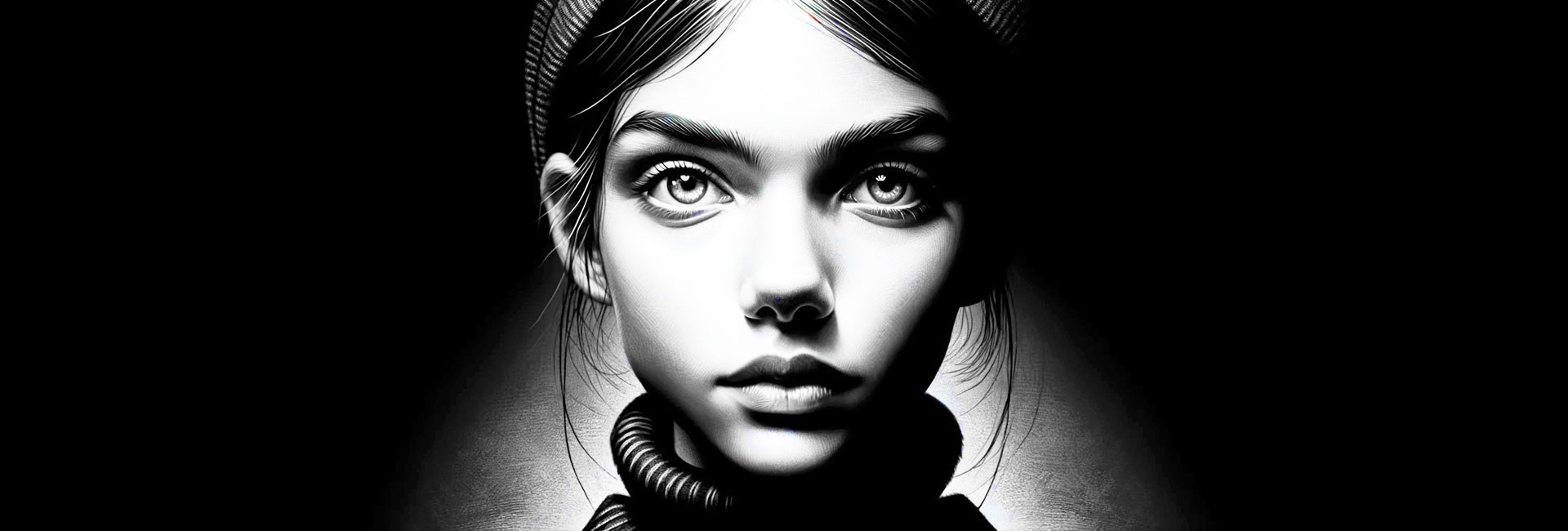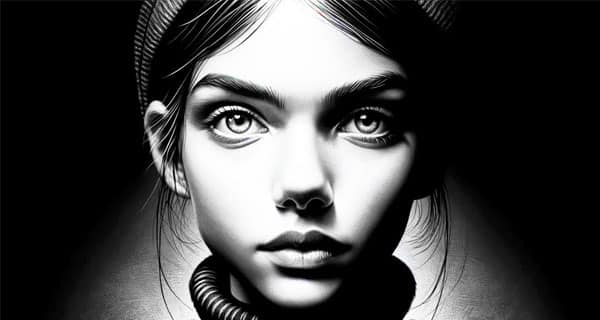
Credit: This illustration was created by AI
Imagine a hypothetical scenario where an Archibald Prize winner, celebrated for their unique artistic contributions, discovers their style has been replicated by an AI to create new artworks. This not only raises questions about the originality and authenticity of art but also spotlights the pressing issue of copyright protection in the era of AI. As artists grapple with these challenges, they find themselves at a crossroads of creativity, technology, and law.
The evolving landscape of AI and its intersection with copyright law has increasingly come to the forefront of legal and ethical debates, particularly as it relates to the use of artist-generated content without explicit consent.
Kim Leutwyler’s experience serves as a poignant case study in this ongoing dialogue. Discovering that their artwork was used to train AI image generators without their permission, Leutwyler articulated a sense of violation, a sentiment that resonates with many within the artistic community. This incident is not isolated but part of a broader concern about how AI technology leverages existing creative works to produce new content, often blurring the lines of copyright infringement and original creation.
The controversy surrounding the Lensa app further complicates the discourse around AI and copyright law. Lensa became known for generating portraits in styles that were eerily reminiscent of those by existing artists, raising alarm bells about the extent to which AI can replicate human creativity without crossing into the realm of copyright infringement. The app’s ability to mimic artistic styles so closely without direct permission from the original artists underscores a growing tension between the capabilities of AI technology and the protections afforded by traditional copyright law. This situation has led to calls for legal frameworks to evolve in response to these technological advancements, ensuring artists’ rights are protected in the digital age.
The crux of the issue lies in the current inadequacy of copyright law to address the nuances of AI generated content. Traditional copyright frameworks are predicated on human authorship and creativity, criteria that become murky when AI, trained on vast datasets of copyrighted works, produces new content. The challenge is twofold: first, in determining the copyright status of AI-generated works, and second, in addressing the use of copyrighted material for training AI without the original creators’ consent. As AI continues to advance, the legal system faces the task of adapting its definitions and protections to accommodate these new forms of creation, ensuring fair compensation and recognition for the original artists.
Looking forward, the dialogue between the technological community and copyright holders is crucial in shaping policies that balance innovation with artists’ rights. This conversation involves not only legal professionals and artists but also technologists and policymakers, aiming to create a framework that recognizes the contributions of original creators while fostering the continued development of AI technology. The experience of artists like Kim Leutwyler highlights the urgent need for these discussions, as the proliferation of AI poses both opportunities and challenges to the traditional understanding of copyright and creativity. As we navigate this complex terrain, the goal should be to develop solutions that respect and protect the intellectual property of artists in the era of artificial intelligence.
The core of the issue lies in the nature of copyright law itself. Copyright protects the tangible expression of ideas but not the ideas, styles, or techniques themselves. This legal framework leaves a gap that AI can exploit, using artists’ styles without direct infringement of copyright law, leading to situations where artists feel their creative identity is under threat.
Kim Leutwyler’s experience further illuminates the dilemma. Kim Leutwyler has not won the Archibald Prize. She has been a finalist multiple times, demonstrating her significant impact and recognition in the Australian art scene, particularly for her portraits that explore themes of gender, identity, and beauty within the LGBTQ+ community. However, records from the Archibald Prize do not list her as a winner of the main prize(Art Gallery NSW) (Wikipedia).
Discovering their artwork used without consent to train AI image generators felt like a violation—a sentiment echoed by many in the artistic community. The controversy surrounding the Lensa app, which generated portraits in styles eerily reminiscent of existing artists’, adds another layer of complexity, highlighting the need for copyright law to adapt to new technological realities.
In response to these challenges, artists are exploring various strategies to protect their work. From applying copyright notices and watermarks to advocating for legal changes that recognize the unique challenges posed by AI, there’s a growing movement towards safeguarding artistic identities in the digital landscape.
The Artist vs. The Algorithm
However, the debate around AI’s role in art isn’t one-sided. Some artists see potential in these technologies, envisioning a future where AI can complement human creativity rather than undermine it. The key lies in finding a balance that respects artists’ rights while embracing the possibilities of AI, a task that requires thoughtful consideration and ongoing dialogue among artists, legal experts, and technologists.
As we delve deeper into this conversation, it’s clear that the intersection of art, technology, and law is fertile ground for exploration. The experiences of Anne, Kim Leutwyler, and others underscore the urgent need for a nuanced approach to copyright in the age of AI, one that recognizes the value of artistic styles and offers meaningful protection to creators.
Copyright AI and the future of Art
In crafting a path forward, we must consider the implications of AI on artistic expression and copyright, exploring innovative solutions that ensure artists can continue to thrive in an ever evolving digital landscape. Whether through legal reforms, technological safeguards, or collaborative efforts between artists and AI developers, the goal remains the same: to preserve the integrity and originality of artistic works in a world where the lines between human and machine creativity increasingly blur.
Please note the above article is general in nature and does not constitute legal advice.
Please email us info@iplegal.com.au if you need legal advice about your brand or another legal matter in this area generally.


